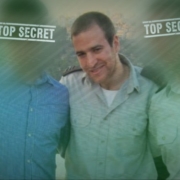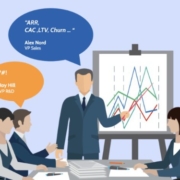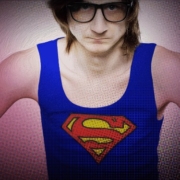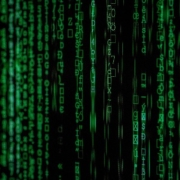Avec l’afflux de stress et d’anxiété provoqué par les défis mondiaux critiques de 2020 – y compris la pandémie COVID-19, la lutte pour la justice raciale et un sentiment croissant d’incertitude économique – la détresse psychologique est en augmentation.
Quatre-vingt-dix pour cent de la main-d’œuvre actuelle est touchée par des problèmes de santé mentale. Même avant que la crise ne frappe, une étude de SAP, Qualtrics et Mind Share Partners, publiée dans la Harvard Business Review, a révélé que près de 50 % des personnes âgées de plus de dix ans et 75 % des membres de la génération Z ont quitté leur emploi pour des raisons de santé mentale.
L’état actuel du monde et son impact négatif sur la santé mentale pose un risque encore plus grand pour le bien-être et les performances des employés. Une étude récente menée par SAP, Qualtrics et Thrive Global a révélé que plus de 70 % des employés se sentent moins productifs et que plus de 85 % s’attendent à ce qu’une distraction accrue ait un impact négatif sur leur travail. Les entreprises ne peuvent pas se permettre d’ignorer ces sentiments.
Alors que le travail de n’importe où devient la norme et que le numérique se transforme en nouveau social, les dirigeants doivent trouver de nouveaux moyens de favoriser de manière proactive les relations humaines et les interactions sociales positives entre collègues. Auparavant, lorsque les rassemblements physiques n’étaient pas aussi menaçants, ces types d’échanges avaient tendance à se produire spontanément.
En tant qu’optimiste, je crois qu’il y a un bon côté aux difficultés existentielles et historiques auxquelles nous sommes tous confrontés. Il y a une opportunité générationnelle de créer un avenir meilleur en donnant la priorité à un nouveau style de leadership, qui favorise et crée une culture de la bonté sur le lieu de travail afin de se prémunir contre le déclin de la santé mentale.
Il a déjà été prouvé scientifiquement que la gentillesse est contagieuse. Et si nous utilisions l’idée de la gentillesse comme une contagion de manière positive pour lutter contre la contagion physique et mentale négative causée par le virus ?
Comment la gentillesse favorise le bonheur des travailleurs
La bonté est associée à l’amabilité, la générosité, la compassion et la bienveillance. Pourtant, ces mots doux ne reconnaissent pas la force et les compétences interpersonnelles de ceux qui pratiquent la bonté envers les autres et envers eux-mêmes. La gentillesse est la capacité surhumaine que nous avons tous. Elle est gratuite, facilement accessible et illimitée. La bonté ne signifie pas toujours être au service des autres ; elle peut aussi signifier être bon envers soi-même. Même un simple petit acte de gentillesse a le pouvoir exponentiel de changer le monde et d’améliorer considérablement notre bien-être émotionnel et physique.
Pour renforcer notre engagement et notre dévouement à diriger avec gentillesse, SAP participe à la troisième campagne annuelle #BeKind21, organisée par le réseau de partenaires SAP Purpose Network, la fondation Born This Way de Lady Gaga. La campagne, qui se déroule du 1er au 21 septembre, invite les universités, les entreprises et les organisations à but non lucratif, ainsi que les particuliers, à participer à des actes de gentillesse quotidiens et à contribuer à la construction d’un monde plus gentil, plus courageux et plus juste.
En s’engageant dans un acte de gentillesse intentionnel tous les jours pendant 21 jours, la campagne #BeKind21 encourage les participants à faire de la gentillesse une habitude, à s’engager à faire preuve de compassion et à favoriser un lien authentique. Elle permet aux gens de traiter la gentillesse comme un verbe et d’agir consciemment pour remonter le moral de leur entourage.
Tout au long de la campagne, nous partagerons notre calendrier avec 21 suggestions quotidiennes sur la façon de pratiquer la gentillesse. Organisez un déjeuner virtuel avec un ami, faites rire quelqu’un ou envoyez un mot gentil à un être cher. Commencez votre journée en notant trois choses dont vous êtes reconnaissant. Prenez du temps pour vous et lisez un article inspirant ou quelques pages de votre livre préféré. Offrez-vous un moment de détente en faisant de la méditation. Jouez un rôle actif en exprimant votre compassion pour vous-même et pour les autres.
Ces actes de gentillesse se perpétueront et inspireront les autres à faire de même.
#LifeatSAP
Chez SAP, nous nous sommes engagés à construire un lieu de travail où les employés peuvent se mettre entièrement au travail. En tant que dirigeants, nous pouvons donner l’exemple de la transparence et et de la vulnérabilité comme des forces. Commencer une réunion en demandant simplement comment vont les collègues ou en les remerciant pour leur travail crée un sentiment de connexion, en particulier dans un lieu de travail virtuel, où il est facile de se sentir distant. En partageant nos propres défis, nous pouvons ouvrir la porte aux autres pour qu’ils fassent part de leurs préoccupations en matière de santé mentale et fournir un chemin d’accès aux ressources pour y répondre.
La technologie peut être un allié pour renforcer la culture et la rendre plus tangible. Un exemple en est une nouvelle application développée pour faciliter l’interaction humaine et atténuer la solitude et l’isolement ressentis par de nombreux employés de SAP. L’application interne connecte les travailleurs à distance via un chat vidéo pour des déjeuners virtuels et a organisé un barbecue virtuel pour 1700 employés, avec un boucher, des recettes et des instructions détaillées. Des chats virtuels au coin du feu, des dégustations de vin en ligne et des projections de films ont également permis aux employés de se connecter. Ces types d’activités peuvent améliorer considérablement la santé et le bien-être des employés.
Passez à l’action
Rejoignez-nous pour déstigmatiser la santé mentale et répandre la contagion de la bonté sur le lieu de travail et dans le monde, en commençant par les personnes avec lesquelles nous interagissons chaque jour.
Engagez-vous à #BeKind21.
Vivek Bapat est Senior Vice-President et responsable de l’expérience de la marque et de l’objectif de SAP.
Publié initialement sur news.sap.com en anglais.
The post La gentillesse est la contagion qui nous rassemble appeared first on SAP France News.

 In 2019, to keep pace with an interior redesign of its visitor experience, the
In 2019, to keep pace with an interior redesign of its visitor experience, the 












